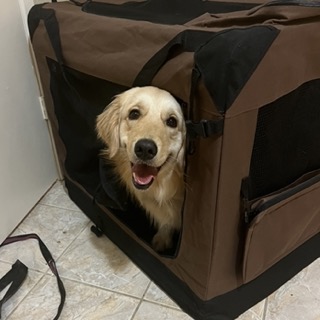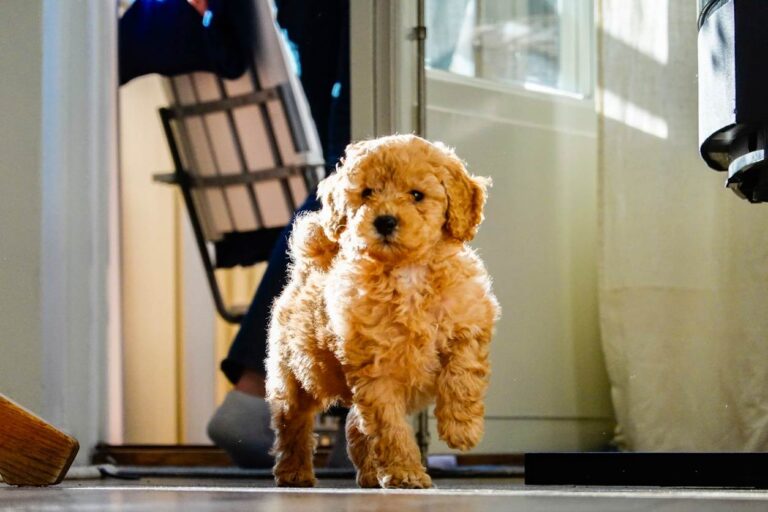Separation Anxiety is a behavior in which dogs exhibit a high amount of stress when being left alone or separated from their owner. Your dog may engage in excessive vocalizing and often will not settle down when you are away. When you’re home, the dog likely follows you from room to room. In severe cases of separation anxiety, your dog may injure themself trying to escape their crate or the door that you last walked through. Excessive chewing on anything from baseboards to windows is often seen. The dog may also urinate or defecate while you’re away, even though they are fully potty trained.
What factors can lead to separation anxiety in dogs?
Separation anxiety is often seen and peaks in middle-aged dogs. Some breeds, in fact, are genetically predisposed to it. Weimaraners, Vizslas, German Shorthaired Pointers, Labrador Retrievers, Border Collies, Cavalier King Charles Spaniels, Cocker Spaniels, Bichon Frises, and Toy Poodles are among some of the breeds that are more prone to developing the behavior.

It mostly stems from working dogs who were bred to do a job with their human, like a Border Collie, or companion animals who were bred to be with their family all the time, like the Toy Poodle. Of course, there are other factors that lead to separation anxiety as well. We most commonly see the behavior among dogs who have very little alone time. The dog typically clings to their owner when they are home, constantly on the owner’s lap or on their feet, following them from room to room. These dogs also likely sleep with their owner in bed.
Do not fret, though, we absolutely encourage you to snuggle your new puppy! It is unlikely for them to have true separation anxiety as described above, but you want to prevent it from happening later. The goal is to keep a healthy balance of cuddle time and independent nap time, so your adult dog is not overwhelmed when they are alone.
Below are some exercises you can do to help your puppy to grow into a happy and confident adult dog.
Crate Training

Crate training your puppy is important for a number of reasons –
- It keeps puppies safe when you are not home
- It immensely helps with housebreaking
- It prepares your dog for the vet or petsitters, where crates are often used
- It teaches your puppy to have alone time when you are away
On top of that, once crate trained as puppies, adult dogs often love their crate and choose to lie in it during downtime.
Where to set up the crate
The first few nights your puppy is home, you may start with the kennel directly next to you. It could be the first time your puppy has been separated from their mom or littermates at this point, so keeping them close is recommended. If the puppy is having a hard time settling, poke your fingers through the crate to comfort them. Each night, start moving the crate further away from the bed until it’s eventually in its desired spot. While your puppy is young, we recommend keeping it within earshot of your bed.
During the day, your puppy should also have at least one nap time in the crate, where you are physically away from them for a couple of hours. This will prepare them for later times when you need to leave the house.
Feed meals when you are away
Unless it conflicts with your potty schedule, one of the ways in which you can feed the puppy’s meals is in the crate when you leave. Leave their kibble meal or a frozen kong stuffed with peanut butter in the crate for them to enjoy. This will help create a positive association when you leave. Do the same thing for nap time or other times of the day when you need time away from the puppy.
Tethering away from your feet
For puppies under four months old, we generally recommend tethering them with their leash to a piece of furniture that is in the same room as you. This keeps the puppy within eyesight so they don’t get up to mischief. We recommend setting up the tether so it is out of range of your feet so the puppy does not become reliant on laying at your feet or on your lap during nap time. The puppy may bark at first because they aren’t able to reach you, but if you ignore it, they will settle down eventually. It’s important not to give a “no” or “knock it off” here because even negative attention is still attention and could reinforce the puppy’s barking.
Have any questions about this? We are happy to help, contact our team here.




